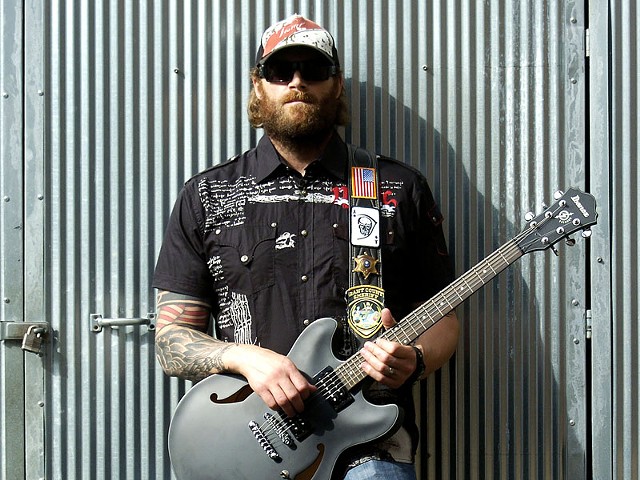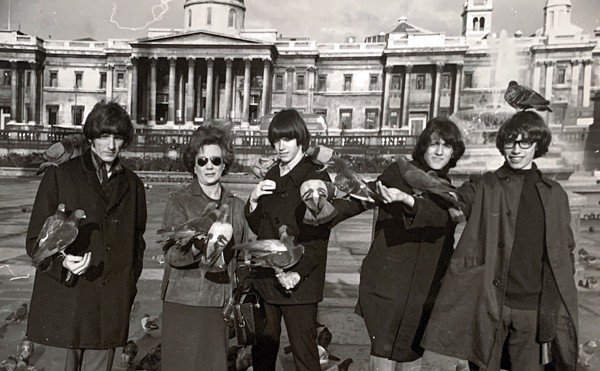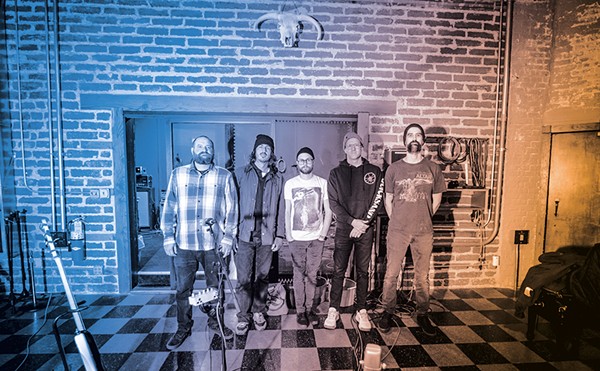On Friday, February 4, Story of the Year is playing a special hometown show at the Pageant. The set will include a performance of the band's major-label debut, Page Avenue, in its entirety. Though the group's official bio says it formed in 2000, St. Louisans know that SOTY's members cut their teeth playing in various local bands starting around 1995. The most notable of these groups performed under the moniker Big Blue Monkey.
After releasing 2002's Story of the Year EP, Big Blue Monkey felt it had accomplished all it could in St. Louis. The group moved to Southern California's Orange County, just as the Page Avenue material was starting to take shape. Shortly before migrating, however, Big Blue Monkey had come to the attention of trailblazing pop-punk band Goldfinger; both bands were playing Pointfest 14 in May of that year. Goldfinger tracked down the Cali transplants and offered them an opening slot on its 2002 summer tour. Soon after, three momentous things happened: Big Blue Monkey changed its name to Story of the Year, Goldfinger guitarist John Feldmann offered to produce what would become Page Avenue, and the group inked a deal with Madonna's Maverick Records.
Released in 2003, Avenue took off on the strength of radio hits such as "Until the Day I Die" and "Anthem of Our Dying Day." The album remains a strong catalog item, too: It has sold around 900,000 copies and still regularly moves between 250 and 500 copies a week. Story of the Year frontman Dan Marsala chatted with B-Sides and fondly recalled some obscure history and trivia about the album.
1. Punks wouldn't take the band, so it signed to a major label.
"We had sent stuff to pretty much every label," Marsala remembers. "We showcased for Drive-Thru, a pretty great indie label. They had Finch, New Found Glory, Midtown. They passed [and said], 'You guys are really good, but we don't think you're ready.' Then Feldmann said, 'Do you want to play for Maverick?' We did the showcase, and they offered us a deal the same day."
2. The album is named after their old stamping grounds.
"The majority of us are from north county," he says. "Only Phil [Sneed, rhythm guitarist], I think he's from south county. The rest of us, we all grew up at least a mile or two away from Page Avenue. [Guitarist Ryan Phillips'] mom lived five houses up from that street, and that's where we practiced all the time for years, in his basement. Adam [Russell, bass] actually lived on Page Avenue for a few years."
3. Page Avenue should have been on the album cover, too, but it's not.
"Maverick one day came in [with] a guy who does all their artwork," Marsala says. "They brought the idea to us. The city scene is a suburb of San Diego or something. We argued with Maverick a whole bunch, like, 'Dude, no matter what, you have to change that to St. Louis.' They said, 'Yeah, yeah, yeah, cool, we'll do it.' And then eventually, they were like, 'We sent it out. It's already pressed.' We were pretty pissed."
4. The clean and explicit versions of the album have identical lyrics, music and artwork.
"The reason there's a parental-advisory [warning] on it is because it came with an enhanced CD," he explains. "It came with a whole EPK [electronic press kit] video. It's us running around, being idiots, throwing up on each other, nudity. It's ridiculous. Everybody was mad, like, 'Why does it have this [warning] on here? You guys don't even cuss!'"
5. The song titles contain references to death, dying, defeat and instruments of destruction — but don't read too much into that.
"I think we were trying to sound tougher without being super heavy," Marsala says. "That was always kind of our goal. We didn't want to play metal. We wanted it to be darker, but not super dark. We weren't depressed people. We were super happy, but we wanted to have that dichotomy there. I don't think we realized [two of the first three song titles refer to death] until the songs were done."





